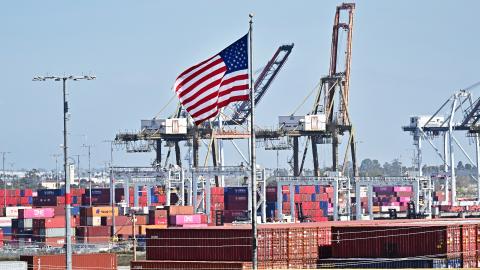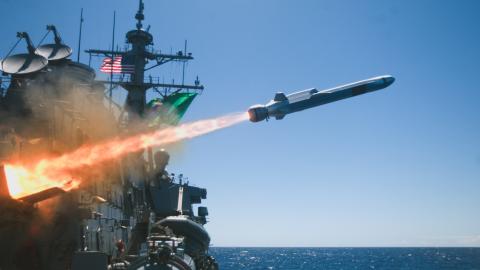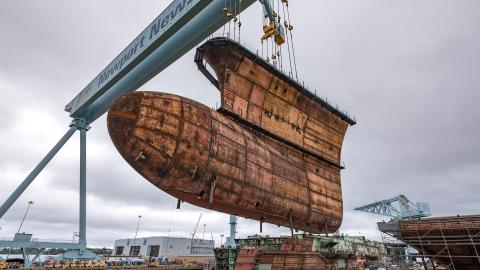Executive Summary
The relatively small size of America’s maritime industrial base is increasingly a liability for United States national security. For decades, almost all growth in the sector has gone to low-cost, government-subsidized foreign competitors. Now US shipping companies carry less than 1 percent of global cargo; US commercial shipbuilders deliver less than 1 percent of the vessels their Chinese counterparts deliver; and US ship repair yards cannot keep up with the relatively small demand from naval vessels required to use domestic providers. Although the US Navy remains the world’s most capable maritime force, the US maritime industry’s inability to sustain or recapitalize military forces could be the difference between victory and defeat in a protracted conflict with China.
The inadequacy of the US maritime industrial base is not a new revelation. Analysts, government officials, and industry leaders have argued for nearly a decade that America’s commercial shipping, shipbuilding, and ship repair companies lack the scale and scope to contribute effectively to US national security needs. The difference now is that US military leaders believe China may want to attack Taiwan within the next two years, and recent operations and programmatic choices have left the Navy with a shrinking and unready fleet. Moreover, the shipping slowdowns caused by Covid-19 demonstrated that America’s supply chains are susceptible to deliberate disruption.
China’s shipbuilding and shipping sectors are overwhelming not just the US maritime industry. Korea and Japan—US allies that were the world’s largest shipbuilders at the start of this century— are falling far behind China, which now supplies two-thirds of the world’s commercial vessels. Chinese companies (including those in Hong Kong) now also own more ships than any other country. Therefore, the US government should take aggressive steps to help sustain and harness allies’ contributions in strengthening the US and allied maritime industrial base.
Washington will need to act decisively to restore the US maritime industry’s ability to protect US supply chains, maintain naval forces, and build new vessels to grow or recapitalize the Navy and US flag fleets. These actions will not need massive new funding if they rely in part on private capital to build new commercial and sealift ships, rebalance the naval fleet toward smaller crewed and uncrewed vessels, and reform ship repair management. Additionally, regulatory changes would help make US shipbuilders and repair yards more productive and competitive.
Specifically, this study recommends the following policy changes and investments:
- Expand the US flag commercial fleet. Through legislation like the proposed SHIPS for America Act, the government should create incentives for companies to place more commercial vessels under the US flag and build a growing portion of them in the United States.
- Assert sovereignty over shipping in US import-export trades. Foreign airlines and communications providers cannot operate in the United States without approval by federal authorities. To protect US sovereignty over its maritime transportation supply chains, the US government should consider restrictions or tariffs on Chinese shipping companies that call on US ports.
- Rebalance the US naval force. If the Navy’s challenges are in the near term, the US government has no time to waste in fielding new classes of vessels that can be built faster, and in more locations, than today’s generation of exquisite warships. Many of these vessels already exist in prototype or demonstration form, or could be converted from existing commercial ships.
- Reform the application of technical authorities. The Navy’s current approach to enforcing technical standards is antiquated and is becoming one of the most significant impediments to completing ship construction projects on time. By giving program managers more authority to approve use of non-governmental standards, the Navy could align accountability and authority in shipbuilding programs.
- Charter new, rather than buying used, surge sealift and CONSOL ships. The Navy’s current approach of buying used Ro-Ros helps mitigate some risk in the surge fleet, but it does not help the US maritime industrial base or address the need for more refueling capacity. Chartering new vessels for these missions would provide greater readiness and a path to build more ships in US yards.
- Modernize public shipyard management. By exploiting modern data harvesting, engineering, and analytics, the Navy could improve planning and resource management at its public shipyards and identify opportunities to coordinate maintenance, repair, and operations (MRO) periods between private and public providers.
- Reform management of private ship repair. The Navy has mismanaged the repair industrial base for more than a decade. In addition to balancing deployments with the need for stability in MRO planning and execution, the Navy should reform its implementation of the multiple award contract multiple order (MAC-MO) process to give MRO providers the time, data, and stability needed to manage their workforce and facilities.
- Enhance collaboration with US allies in shipping, shipbuilding, and repair. While the goal of this report is to improve the US maritime industrial base, shipbuilders and MRO providers in Korea and Japan can provide investment and expertise to US yards, which can partner with them on new construction and repair projects, both in the US and their home countries. Similarly, protecting maritime supply chains will require growing US flag commercial fleets and collaborating with shipping companies based in allied countries.
Most recent studies of the US maritime industrial base have recommended large increases in defense and infrastructure spending to expand the industry and US naval battle force. While that approach might work, it is politically unlikely given rising US federal deficits and debt and increasing demands to reduce government spending. Rather, a more balanced approach that includes regulatory reforms and channels new funding toward the measures detailed in this report is more likely to be effective and cost efficient in repositioning American and allied industrial bases and competing more effectively with China in the maritime sector.
The US government has a historic opportunity to resurrect America’s maritime industry. The recent return of industrial policy, the urgency of deterring Chinese aggression, and the experience of pandemic-related supply chain disruptions combine to highlight the importance and value of investing in shipping, shipbuilding, and ship repair. US leaders should exploit this opening before China takes advantage of its dominance to attack US allies and cut off America’s supply chains.




















